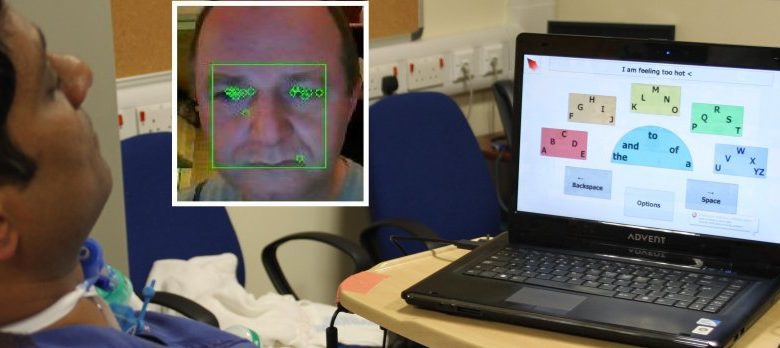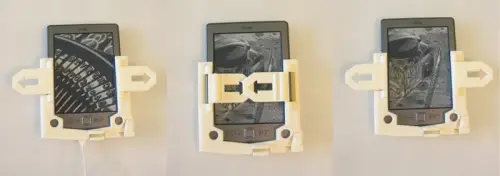
The wonders of technology and accessibility
Update: September 2024
We are preserving the original article below as part of our archive, but since its publication in 2013, significant advancements have been made in technology and accessibility. Here are some key updates:
- Recent Advancements: The world of voice-controlled devices has seen remarkable evolution, with AI-powered assistants like Alexa and Google Assistant becoming integral parts of daily life for many. These tools have greatly enhanced accessibility for individuals with mobility and speech impairments. Read more about how AI can help disabled people.
- Communication Aids: The Big Button to Text unit and head-tracking software have been further refined, offering more precise control and integration with modern devices. Additionally, augmented reality (AR) and virtual reality (VR) technologies are being explored for their potential in enhancing communication aids.
- Enhancing Online Security with VPNs As technology advances, so do the threats to online security. VPNs like VeePN offer a solution by encrypting internet connections, making it safer for disabled individuals to access online resources and services without worrying about data breaches or cyber attacks.
The original article remains below, providing a historical context and insight into the early innovations in accessibility technology:
Technology and gadgets are developing and changing all the time, and the advantages they can bring are awesome.
Take, for example, the developments in cyber security. The number of cyber-crimes worldwide has grown exponentially in recent years, as hackers try to steal personal and financial information. They then use this information for their own gain. As a result, many universities now offer a Master’s Degree in Cybersecurity. This degree, which students can actually earn online, provides the knowledge to fight these criminals in a corporate or public service work environment. This means that when technology creates a problem, there is always someone to develop a solution. Other areas of technology have also seen growth. But not everyone can access these tech devices easily. Enter Dr John Dingley who has created a number of solutions for products, from a music player to an e-book page turner.
I have always been interested in making things since I was a young child. As part of my job as a consultant anaesthetist, I am involved in some early medical research aiming to reduce brain injury in newborn babies at, or around, the time of birth.
You can find out more about my work in minimising brain injuries in newborn babies on the Bristol University website.
These projects require the creation of novel medical devices, and this is my main role. However in a semi-hobby capacity, I am also applying the skills I have learned to a number of personal assisted living projects.
And it’s not just me that’s an enthusiast. Recently, the hobby electronics field has been transformed with the availability of low cost devices that would have been unthinkable a few years ago.
An example is the Arduino series of small computers on a single circuit board. These cost around £20 and can be used to read information from sensors, make decisions and take actions, i.e. they can be harnessed to make handy solutions possible.
The first assisted living device I made in was 2010, called the Magic Music Table. Built with my daughter in mind, who is unable to load and operate a CD player or negotiate the small buttons and menus of mp3 players, the Magic Music Player allows her to select albums by simply placing coloured blocks on a small wooden table. Watch the video below to see what I mean:
I currently work on an intensive care unit for burns patients. Some can be on a mechanical ventilator via a tracheostomy and so unable to speak. The usual method of writing messages to nurses may not work if both hands are bandaged as well, not an uncommon situation. This set me thinking about simple communication aids using low cost technologies.
Hand-controlled
My first invention to solve this issue used a Wii Nunchuck, a hand held games controller with a thumb joystick, to allow users to select letters on a TV screen.
Using a computer circuit board (in this case an Arduino I mentioned earlier), I connected the Wii Nunchuck to a regular television, which could then display the letters of the alphabet. The Wii-Nunchuck could then be used to move a flashing cursor along the screen to select letters, therefore enabling users to spell out short sentences.
Although this was useful for some, I realised that not everyone would be able to operate the thumb joystick, especially the intended burn patients.
So I moved onto the next invention: the Big Button to Text unit. This used the same on-screen alphabet, but now allowed users to select letters via a series of five huge push buttons, for which I used the ‘easy’ buttons available from Staples stationary stores. These buttons moved the flashing cursor around the screen, and pressing the fifth button selected the letter. See it in action:
Head movement
But I felt that there was more I could do to make it accessible to more people. On scouring the internet I came across some free software that tracks the movement of your facial features via a webcam, allowing someone to move the cursor around the screen just by moving their head.
By combining this software (Headmouse 1.5) with an on-screen keyboard program with predictive text features (Dynamic Keyboard), also freely available, we found someone could quite easily spell out short phrases. It could also be set up on a laptop screen, using the laptop camera to track their head movements.
Arm movement
A variation on this theme was also then tried. The Microsoft KinectTM gaming system has a very clever sensor mounted in a plastic bar, which tracks arm and leg movements against the background.
This was actually developed from military technology, but there was a freely available version of this software, which allows the sensor to be connected to a laptop computer to track movement of your right arm only.
Combining this setup with the on-screen keyboard we previously used with the headtracker, we found it was quite possible to spell out words simply by moving the right arm, even if the arm was bandaged.
Of all these text communication projects, the easiest to setup and use is the head tracking version, as all you need to do is set a laptop up in front of the user.
Kindle Page Turner
Some people find a Kindle a great alternative to having to hold a heavy book. But for many, there is then another issue: small, fiddly buttons. I wanted to come up with a solution to this problem.
What I designed was essentially a simple plastic device with mechanical tabs that sits around the Kindle, allowing the user to press large tabs, instead of the small buttons on the screen. Having had quite a few patients use this, mainly through the occupational therapists where I work, we’ve found it to be a big success.
So much so that a company is now interested in making them so more people can benefit from it. To help cover the development costs – producing the plastic moulds isn’t cheap – we have set up a Kickstarter project, the online crowd funding site where potential users invest small sums for a variety of benefits. In this case, donating £23 or more will get you one of the Kindle Page Turners, with free postage and packaging. Just take a look our page on the Kickstarter website to learn more, including a video where you can see it in action.
We shall see how this one develops; I hope you will help me spread the word. Meanwhile the Magic Music Table is still going strong despite the hard life it has led so far!
By John Dingley
Want one of these?! You can find out more about all of John’s useful products, including downloading some of the free software, by visiting the below websites:
- Magic Music Table
- Portable version of the Magic Music Table
- Text unit using a Wii-Nunchuck
- Kindle Page Turner
- Dynamic Keyboard software
Check out…
• Calling all budding disabled film makers!
• UltraBikes keep blind cyclists on track
• Go ON Gold: improving accessibility to the internet
Do you have an invention you want to shout about? Get in touch by messaging us on Facebook, tweeting us @DHorizons, emailing us at editor@disabilityhorizons.com or leaving your comments below.

Very nice products for people with disabilities. There is a certain elegance to your ideas, and I can’t wait to see what you do next! As time progresses, I am seeing some good innovations in the world of voice-controlled devices, like the Motorola Moto X and the ivee Sleek, but I like your Kindle fire page turning device. Keep up the good work! http://ophir6.blogspot.com/